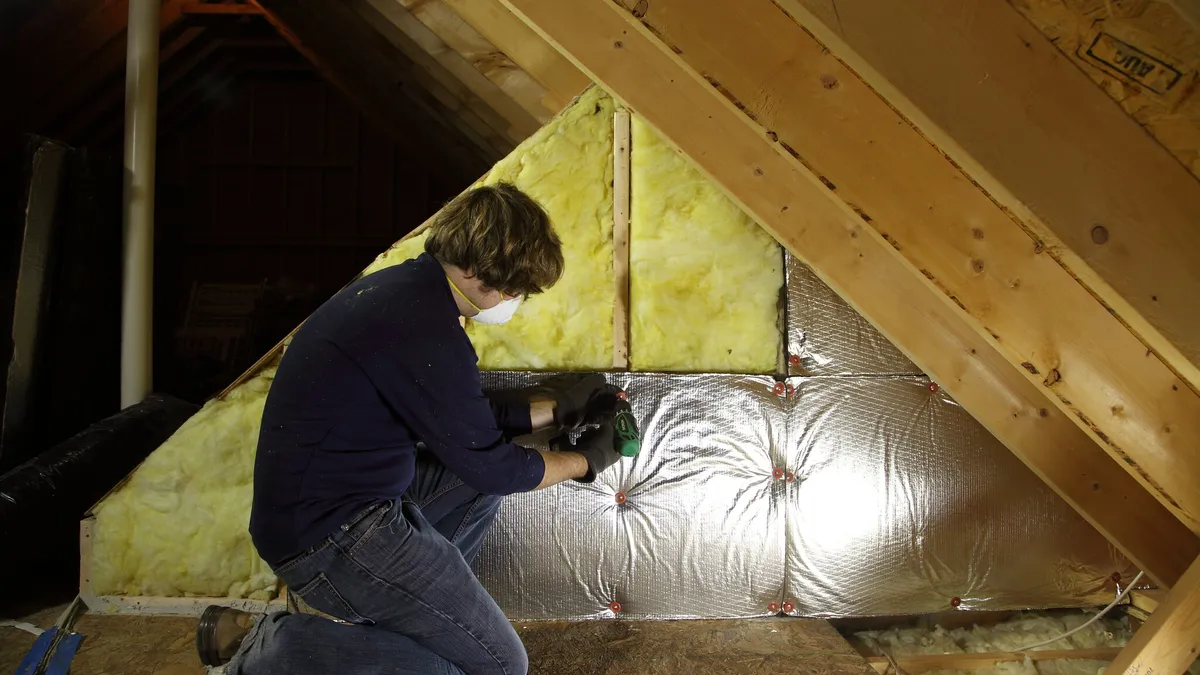Comprehensive retrofits to the aging U.S. housing stock are needed in order to “avoid catastrophic climate change and to improve living conditions for millions,” the American Council for an Energy-Efficient Economy said in an April 1 report. How home improvements are packaged and marketed will have a major impact on uptake, the research noted, and financial incentives like no-interest loans with no money upfront can further drive interest.
About two-thirds of homeowners in the U.S. are “willing and able” to invest $1,000 or more in upgrades to reduce household energy use by at least 20%, but “retrofits are generally more expensive,” ACEEE said. The group’s report aims to provide city and state energy offices, contractors and program administrators with information on how to market their energy upgrade programs.
“We want to go beyond just one-off energy upgrades. How do we encourage homeowners to do more of that?” ACEEE Research Analyst Grace Lewallen, a co-author of the report, said during an online discussion of the research.
For its survey, ACEEE queried 1,500 U.S. homeowners about their preferences between sets of home upgrades with different savings and costs to determine which were most likely to gain traction.
The Inflation Reduction Act offers rebates for low-income homeowners to upgrade, but ACEEE said homeowners who do not qualify for means-tested incentives, and in particular those just above the low-income threshold, “receive fewer incentives and often remain unable to upgrade.”
In July, the U.S. Department of Energy made $8.5 bilion available to states and territories for home efficiency and electrification rebate programs. At least half of the program funds should go to low-income households, DOE said.
“There's been a nationwide push for more of this comprehensive level of energy upgrades and investment, and with the push comes incentives. But offering the money may not be enough to get people to take the government up on this offer,” Lewallen said.
“Our experiment on perceptions of financial incentives showed that solutions such as no-interest loans with no money upfront significantly increased willingness to invest in comprehensive upgrades,” the report said.
ACEEE noted Pacific Gas & Electric’s Energy Efficiency Financing Program and the Mass Save HEAT Loan as two examples of no-interest loans for home upgrades.
In ACEEE’s survey, homeowners across all demographics identified upfront costs, bill savings and comfort as the factors driving their home energy upgrade decisions. Interest in factors like the ability to install new smart technologies and to increase property values varied by demographic segment “and could therefore help further tailor marketing campaigns to make them more effective,” according to the report.
Comprehensive retrofit packages and marketing approaches should be tailored based on the consumer segment, ACEEE said. Packages of upgrades including water heaters and heating and cooling systems were selected much more frequently, while those with solar panels, a Level 2 electric vehicle charger or efficient windows were selected less often in the homeowner survey.
“There is no one package to rule them all,” said Lewallen.
ACEEE also noted that the survey found “no significant difference” in uptake when contractors claimed home retrofit rebates for the customers compared with when customers applied directly. The lack of a difference “suggests that the standard incentives provided by the IRA legislation tax credits may be insufficient on their own to reduce comprehensive retrofit prices to manageable levels for the average homeowner,” the report said.
Ultimately, ACEEE said, policymakers should consider modifying incentive eligibility requirements to provide more help to moderate-income households.
“The IRA legislation (and similar efforts) provide low-income homeowners with substantial incentives for energy upgrades that are significantly higher than incentives would be for non-low-income households,” the report concluded. Those incentives are vital, but “the rigid income cutoffs mean that homeowners who only barely miss that cutoff receive substantially lower rebates.”















